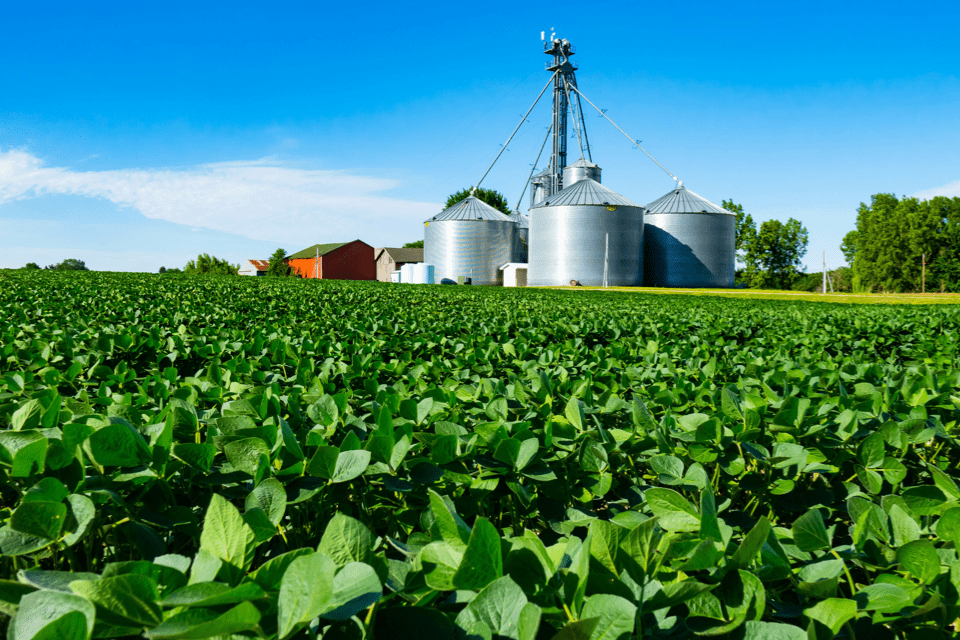Soybeans became an important crop in Wisconsin due to several factors that the state’s agricultural landscape. The history of soybean cultivation in Wisconsin dates back the early 1900s, but it wasn’t until the mid-20th century that their significance significantly increased.
In the early 1900s, soybeans were to Wisconsin as a novelty crop and primarily utilized for forage and soil improvement purposes. Farmers recognized the potential of soybeans as a valuable source of protein for livestock feed, particularly during wartime when traditional feed supplies were scarce. However, widespread adoption of soybeans as a cash crop came much later.
The pivotal turning point occurred during the 1940s and 1950s when developments in agriculture created new opportunities for Wisconsin farmers. Technological advancements, such as improved machinery and seed varieties, along with increased demand for soy products, contributed to the rise of soybean cultivation.
One significant milestone during this period was the introduction of hybrid soybean varieties, which boasted higher yield potential and improved adaptability to Wisconsin’s climate. Hybridization efforts in the 1930s and early 1940s resulted in the release of high-yielding soybean varieties that thrived in the state’s soil and weather conditions. These advancements provided farmers with the means to significantly increase soybean production.

The 1950s witnessed a surge in soybean plantings in Wisconsin. From 1950 to 1959, soybean acreage in the state more than quadrupled, from around 160,000 acres to over 700,000 acres. This remarkable expansion was fueled by the growing demand for soybean meal, oil, and other soy-based products. The increased use of soybean meal as animal feed, as well as the rise in consumer demand for soy oil in food processing, drove the economic viability of soybean production in Wisconsin.
By the 1960s, soybeans had firmly established themselves as a crucial cash crop in the state. In 1960, Wisconsin ranked sixth in the nation for soybean production, with over 1.2 million acres of soybeans harvested. This level of production was a testament to the state’s agricultural adaptability and the farmers’ willingness to embrace new crops that offered economic potential.
The importance of soybeans in Wisconsin’s agricultural landscape continued to grow throughout the second half of the 20th century. By the 1980s, soybean acreage had surpassed that of corn in the state, making soybeans the dominant crop in terms of planted area.
The growth and significance of soybean cultivation in Wisconsin were deeply influenced by key individuals and companies that played pivotal roles in the development and expansion of the crop. The rise of soybeans as an important crop in the state can be attributed to their efforts, contributions, and innovation in the agricultural sector.
One notable figure is Dr. William Morse, a plant breeder and professor at the University of Wisconsin-Madison. Dr. Morse dedicated his career to soybean research and played a critical role in developing high-yielding soybean varieties suitable for Wisconsin’s climate and soil conditions. His work in hybridization and breeding programs in the 1930s and 1940s resulted in the release of improved soybean seed varieties, which significantly boosted soybean production in the state.
Seed producers have also played a crucial role in the growth of soybeans in Wisconsin, developing genetically superior soybean varieties and contributed to the increasing availability of high-performance seeds in the region. Their commitment to research and development, combined with partnerships with local farmers, has been instrumental in driving increased soybean production and productivity.
Furthermore, the Wisconsin Soybean Marketing Board (WSMB) has been instrumental in promoting the soybean industry in the state. The WSMB, funded by soybean farmers through checkoff programs, provides support and resources to enhance the production, marketability, and profitability of soybeans in Wisconsin. Their initiatives include research funding, educational programs, and marketing campaigns to create awareness and expand market opportunities for soybean growers.
Prominent agricultural cooperatives have supported soybean farmers by providing crop inputs, agronomic expertise, and marketing services. Their commitment to sustainable farming practices and their distribution network has been critical in facilitating the growth and success of soybean production in the state.
Agricultural machinery manufacturers such as John Deere and Case IH have been important players in the expansion of soybean cultivation. These companies have continuously developed and improved equipment and machinery specifically designed for soybean production, enabling farmers to efficiently plant, cultivate, and harvest soybeans on a larger scale.
Additionally, the collaboration between Wisconsin farmers, local cooperatives, universities, and governmental organizations, such as the Wisconsin Department of Agriculture, Trade and Consumer Protection, has been vital in promoting research, education, and sharing best practices related to soybean production. These partnerships have fostered knowledge exchange and facilitated the adoption of innovative techniques and technologies across the state.
The combined efforts and contributions of key individuals like Dr. William Morse, innovative companies, agricultural cooperatives, machinery manufacturers, and the collaborative spirit of the agricultural community have driven the growth and success of soybean cultivation in Wisconsin. These actors and organizations have fostered an environment conducive to advancements in crop genetics, farming practices, and market development, establishing soybeans as a key crop in the state’s agricultural landscape.
The economic benefits of soybean cultivation in Wisconsin are substantial. The cash flow from soybean sales injected millions of dollars into the state’s economy. According to data from the United States Department of Agriculture (USDA), the value of soybean production in Wisconsin reached nearly $1 billion in 2020 alone.
Additionally, soybeans have had positive environmental impacts in Wisconsin. They are a rotational crop that helps break pest cycles and improve soil health. Their ability to fix nitrogen reduces the need for synthetic fertilizers, and the crop’s deep rooting can enhance water infiltration and reduce erosion.
The increased prominence of soybeans in Wisconsin’s agriculture reflects the ability of farmers to adapt to changing market demands and take advantage of advancements in crop production technology. The versatility of soybeans as a source of protein for livestock feed and oil for industrial and consumer applications has made them a staple of the state’s economy.
Overall, thanks to favorable growing conditions, advances in farming practices, and the dedication of Wisconsin’s farmers, soybeans have emerged as a significant and thriving crop in the state, contributing to its agricultural, economic, and environmental success.
For more information: Wisconsin Soybean Marketing Board
















